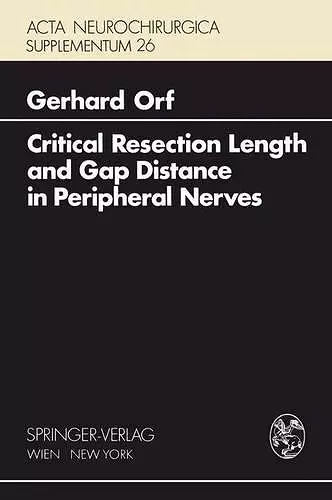Critical Resection Length and Gap Distance in Peripheral Nerves
Experimental and Morphological Studies
Format:Paperback
Publisher:Springer Verlag GmbH
Published:26th Jul '78
Should be back in stock very soon

Springer Book Archives
The Second World War gave rise to a previously inconceivable number of peripheral nerve injuries. Besides in most cases the defect of substance is not as great as in war injuries, in which the so-called "critical resection length" (Seddon) was the cause of the greatest difficulties and consti tuted the crucial obstacle to good success.The Second World War gave rise to a previously inconceivable number of peripheral nerve injuries. Only later on did these injuries occasion renewed intensive research in this field of neurosurgery. Among the factors which have promoted this development is the operating microscope with more refined surgical techniques. Of course, surgery of peripheral nerve injuries in peacetime is not to be compared with that in wartime. Only rapid wound healing enables a secondary suture to be performed at a favorable time, after about four weeks. Besides in most cases the defect of substance is not as great as in war injuries, in which the so-called "critical resection length" (Seddon) was the cause of the greatest difficulties and consti tuted the crucial obstacle to good success. The experienced surgeons of the Second World War always knew that the specified dimensions were far too great for the critical resection length. They could only resort to attempting a suture even when there was a great gap be tween the ends of the nerves. Precise information was not available on direct damage to the axis cylinder or alteration due to vascular factors when stretching the various nerves, above all during the later mobilization of joint decompressions. In my opinion, the experimental investigations of the author can make a contribution here. The precisely executed and afterwards carefully analyzed experiments appear very likely to be applicable to human conditions as regards their percentages of total nerve length.
ISBN: 9783211814826
Dimensions: unknown
Weight: unknown
92 pages
Softcover reprint of the original 1st ed. 1978